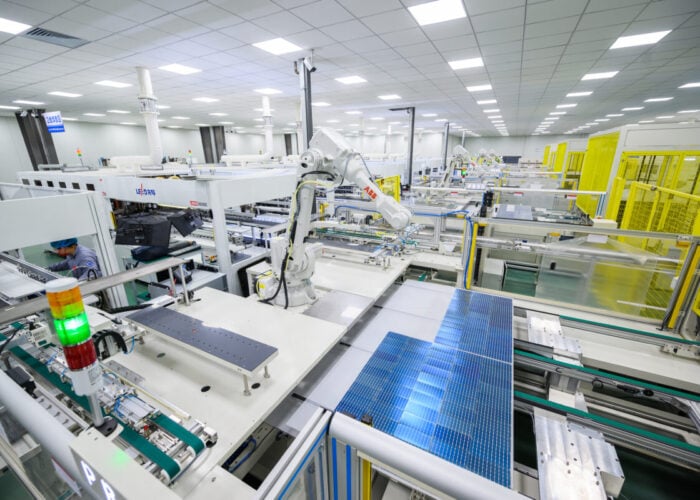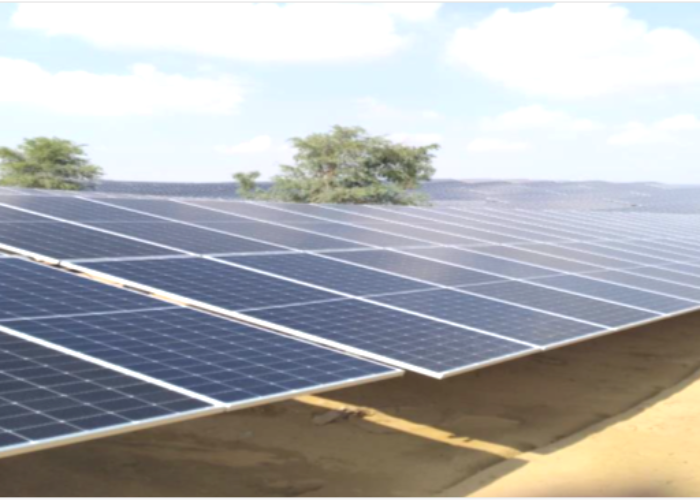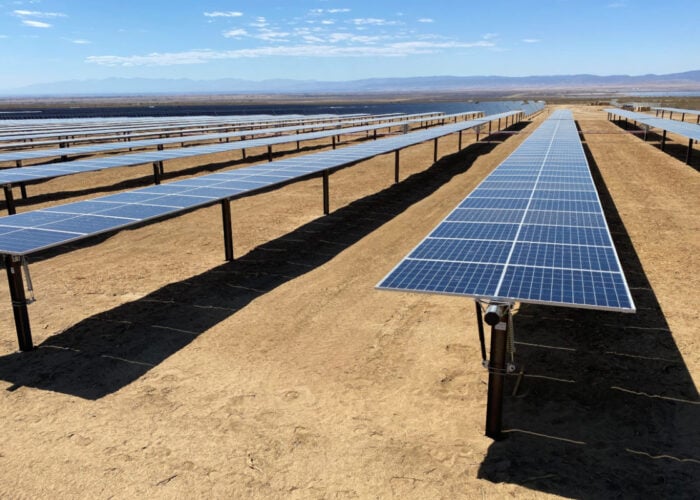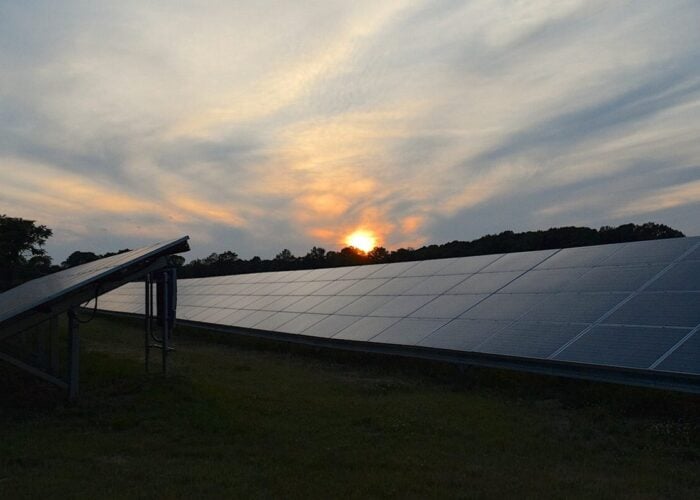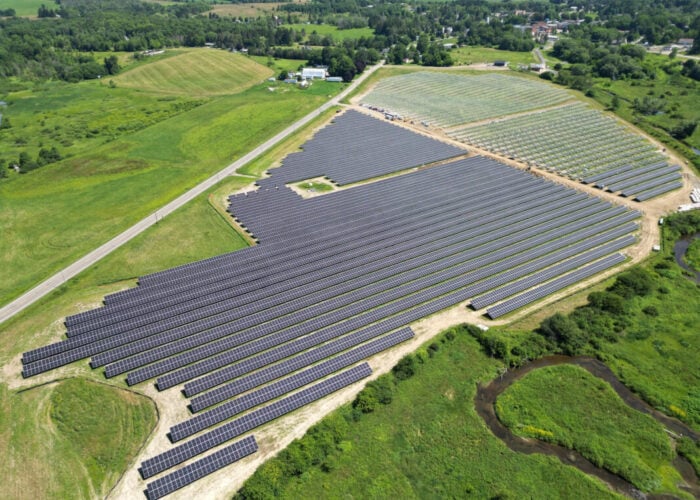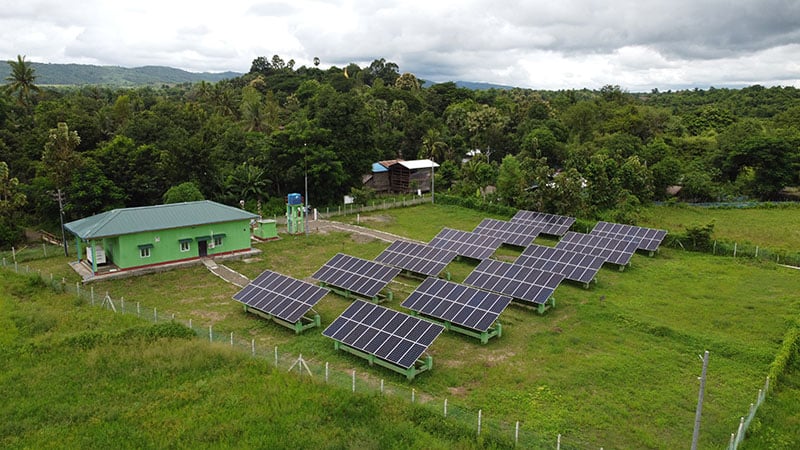
Earlier this year, a report from GOGLA, the global association for the off-grid solar energy industry, noted that global investment into the off-grid solar sector reached just over US$300 million in 2024, a significant 30% year-on-year decline in total finance.
Indeed, debt and equity investment saw the most striking decline, with scale-up companies receiving US$543.1 million in financing through debt and equity in 2022, compared to just US$91.7 million in 2023 and US$53.4 million in 2024. This trend suggests that, at least for the scale-up sector, investors have become much more cautious with their money in just the last 24 months.
Unlock unlimited access for 12 whole months of distinctive global analysis
Photovoltaics International is now included.
- Regular insight and analysis of the industry’s biggest developments
- In-depth interviews with the industry’s leading figures
- Unlimited digital access to the PV Tech Power journal catalogue
- Unlimited digital access to the Photovoltaics International journal catalogue
- Access to more than 1,000 technical papers
- Discounts on Solar Media’s portfolio of events, in-person and virtual
Or continue reading this article for free
While this headline figure makes for ominous reading, the GOGLA report pointed out that this is not a herald of the collapse of the off-grid solar industry. It described some of its conclusions as “promising”, and the slowdown in investment and, particularly, project deployment, is to be expected as the global clean energy industry transitions from a period of unprecedented growth to one of more careful and deliberate investments into less risky projects.
“There is an adjustment in the industry [where] there are cycles,” explains Laura Fortes, senior manager for access to finance at GOGLA and one of the report’s authors, speaking to PV Tech Premium following its publication. “There’s hype—okay, this technology is able to electrify all sorts of people that live remotely and unelectrified and we can do this at scale and quickly—and we had to adjust that.”
Cyclical investment trends
Fortes’ key point is that investment, in all industries, often follows a cyclical pattern. This is not to say that these trends ought to be ignored—indeed, there are important lessons to be learned from the rapid change in investment appetite in off-grid solar—but that broader economic factors, both within and beyond the off-grid solar sector, have affected the volume of capital entering the industry.
“There’s been a couple of years of adjustment in the industry,” says Fortes. “The macroeconomic conditions—rising interest rates [and] uncertainty—do not help, so we see it is mirroring general business trends in Africa. In the past year, we’ve seen investments go down by 25%, so it’s near that trend.
“[But] we cannot fully say it is [based on] macroeconomic trends,” Fortes continues, suggesting that many of the market fundamentals that have made solar in general, and off-grid solar in particular, an attractive investment will continue to attract finance into the future. Figures from Wood Mackenzie show that solar has a lowest levelised cost of electricity (LCOE) than wind, and that the average cost of generating electricity from solar sources has only fallen over time.
“We see the Mission 300 initiative by the World Bank and African Development Bank (AFDB), where off-grid solar is really acknowledged and determined by these big actors to help electrify 50%,” says Fortes. “If you read the energy progress report, it says very clearly it needs to come from here; it’s the most efficient way, it’s the most affordable as well and is the farthest-reaching, so that acknowledgement is really helpful.”
The Mission 300 project, for instance, aims to deliver electricity access to 300 million people in Sub-Saharan Africa by 2030, in the processes delivering around US$5.6 billion in household savings and providing power to two million “micro-enterprises” to help expand local economies. The World Bank describes off-grid solar as “the most cost-effective way” to reach these goals, and long-term goals such as these will help maintain interest in the off-grid solar sector for years to come.
However, Fortes acknowledges that relying on market fundamentals and macro strategies will not be enough to continue the rapid deployment of off-grid solar projects. Indeed, she suggests that those in the off-grid sector, from consumers to investors, would benefit from seeing energy access as the beginning of new investment opportunities, not the end of a transaction.
“Energy access is not the end, energy access is an enabler,” says Fortes. “Having energy is a key enabler for development by all means. We have lots of ways to measure how by having energy access you can be wealthier and there are more jobs being created [so] I think we have to make that link clearer and get better at communicating that.
“It’s not just Sustainable Development Goal 7 and it’s not just: ‘You have energy access, that’s it’. It’s everything that comes after it, for power business, for boosting education and healthcare and supporting livelihoods. There are so many other benefits that can come from this sector, [that are] more attractive to investors who want that, but do not necessarily think about energy access as the starting point.”
How to engage investors
This change in thinking is just one of the ways that Fortes suggests the off-grid solar sector can better engage with investors. This is not the fault of investors or consumers per se, but the rapidly-changing investment landscape in off-grid solar means that an investor making a decision on a project five years ago was having to evaluate very different circumstances to one making a similar decision today.
“Drawn in by the big investments in the past—scale is what investors want to hear—there was an expectation from investors that had to be adjusted,” explains Fortes. “For a few years now, we’ve been working in credit risk management and consumer protection, and that’s been the real shift in the industry.”
The rapid change in the scale of investments is evident in GOGLA’s figures. In the last five years, off-grid investment changed from just over US$300 million in 2020 to a peak of nearly US$800 million in 2022 and back to US$300 million in 2024.
The type of financing has also changed considerably, with the majority of investment in 2024 taking the form of off-balance sheet investments, the first time that this has been the case. The US$176 million raised in off-balance sheet investment in 2024 is more than the off-balance sheet investment raised cumulatively between 2019 and 2022, and more than all the capital raised, across all financing mechanisms, cumulatively between 2012 and 2014.
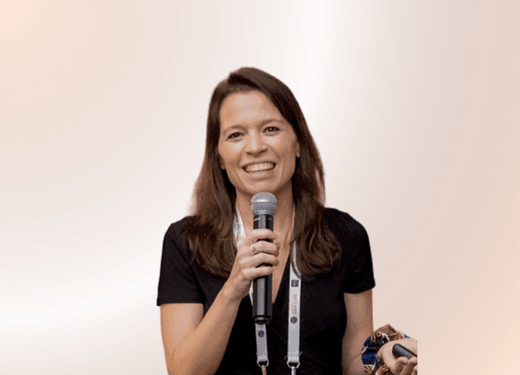
“I think for the early investments, the narrative was just enough,” says Fortes, highlighting how investors are now much more likely to support a project if it has a clear business case, beyond just the nebulous good that is done by investing in renewable power.
“We have gotten more concrete, now, [such as] a KPI framework that investors can use to measure those adaptations’ benefits, so I think we can do a lot better at reaching out to those audiences and those climate investors,” says Fortes. “We need good businesses.”
While Fortes is broadly positive about this transition, saying that this emphasis on projects that are likely to deliver a return on investment from a financial perspective has helped make developers more cognisant of the need to secure their project’s financial fundamentals, there is a risk. Namely, projects that engage less thoroughly with their financial performance are likely to be left behind, and see capital for their projects dry up.
“That’s why you see a decrease in equity investments in the last two or three years,” Fortes explains. “We’ve seen mergers and acquisitions (M&As) in the sector, we’ve seen pain [as] companies fall out or close down, and that’s been this adjustment moment. We’ve seen quite a few mid-size companies be acquired, or have an exit, and not on good terms.”
“It’s a bit painful. As GOGLA we represent the whole industry – the investors, the companies, everybody – so it’s not great for me to say that consolidation has been good because there’s been a lot of companies that were good companies that were facing really difficult and tough conditions, and they haven’t managed [to survive] but we’ve learned those lessons.”
Thoughtful and selective investments
Ultimately, Fortes says that this does not make the off-grid solar sector an unattractive investment destination, but one that is “complex”, and must be approached “thoughtfully”.
“Investors are more selective,” Fortes says. “If we talk specifically about the off-balance sheet transactions, they’re more selective. When you have that type of transaction, you’re selective in terms of ‘if I invest in a company and its balance sheet I’m investing in the company.’ If you’re investing in a separate structure, then you’re investing in the structure.
“We’re seeing interesting, blended finance ways of doing it. For example, if you’re more risk adverse we see donors and philanthropists sub in to provide the first loss or a sort of warranty to get more comfortable with it, so you have less exposure to the company.”
This echoes a sentiment expressed by Fortes’ colleague Drew Corbyn, who spoke to PV Tech Power last year on GOGLA’s work, and explained that there had been an “expansion in the nature” of off-grid solar, which must be echoed by an expansion in the types of financing mechanisms available, and end goals for investors.
“You need to get to know the consumers really well,” adds Fortes, arguing that off-grid solar is often a fundamentally different kind of investment to another project, and requires considerable expertise. “You need to get close to them, you can’t just scale it like a web product for a developer; it’s an asset that people own, you need to understand what the consumers are able to pay.”
“I’m not going to say it’s not complex. It can be complex, and that’s why you have to do it very thoughtfully. But I think that the benefits outweigh the potential setbacks that you have.”

